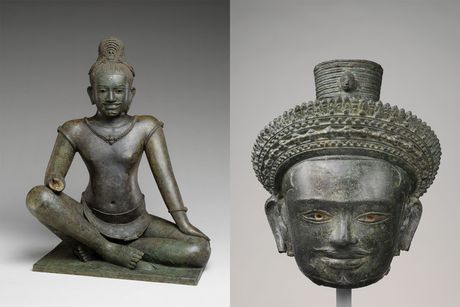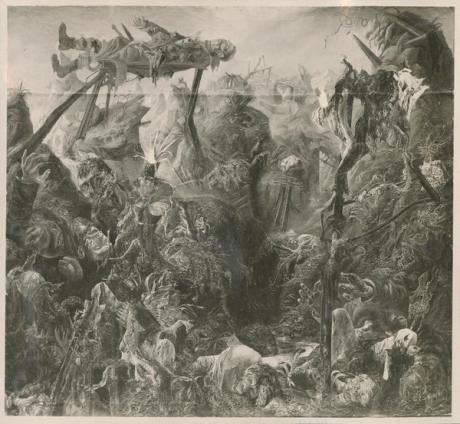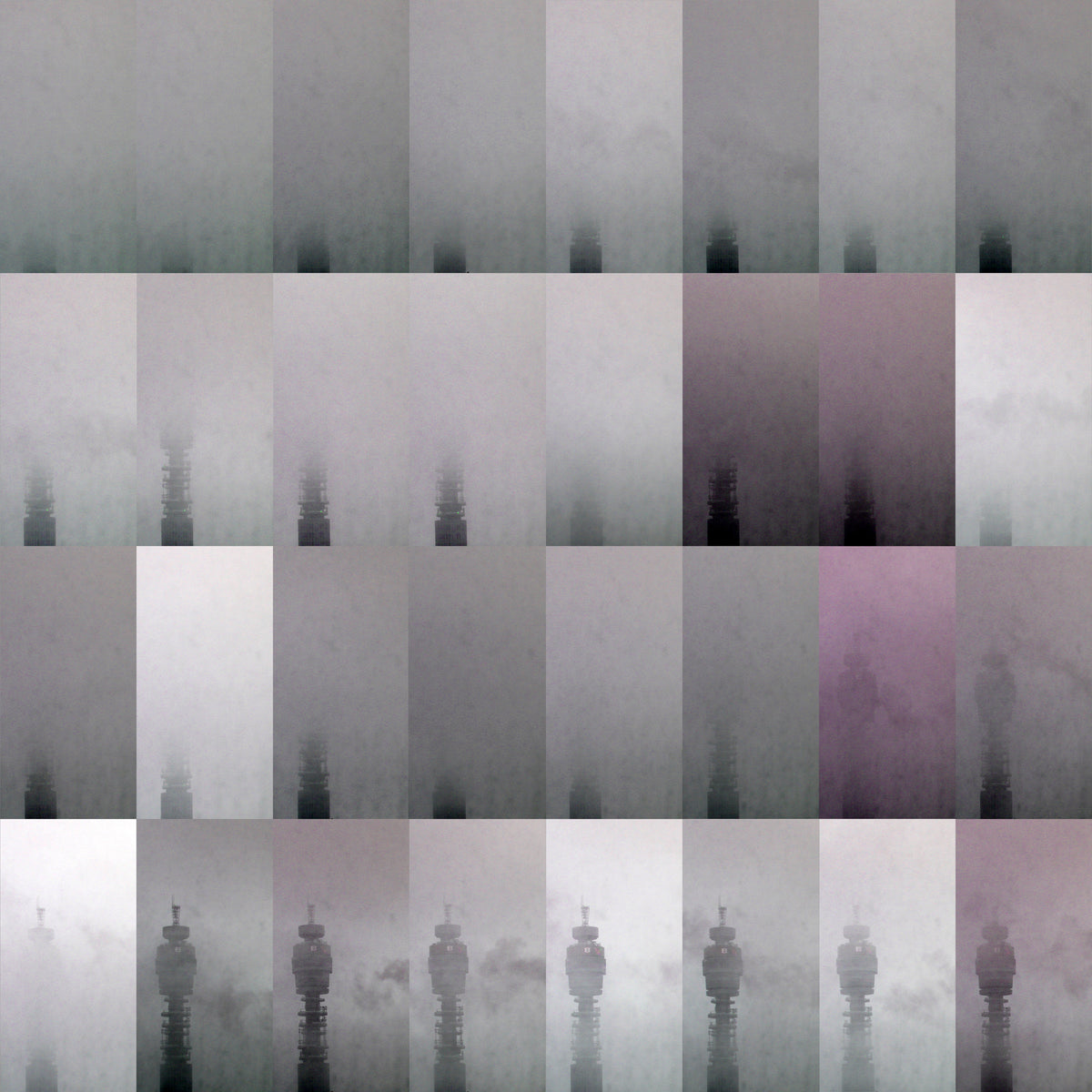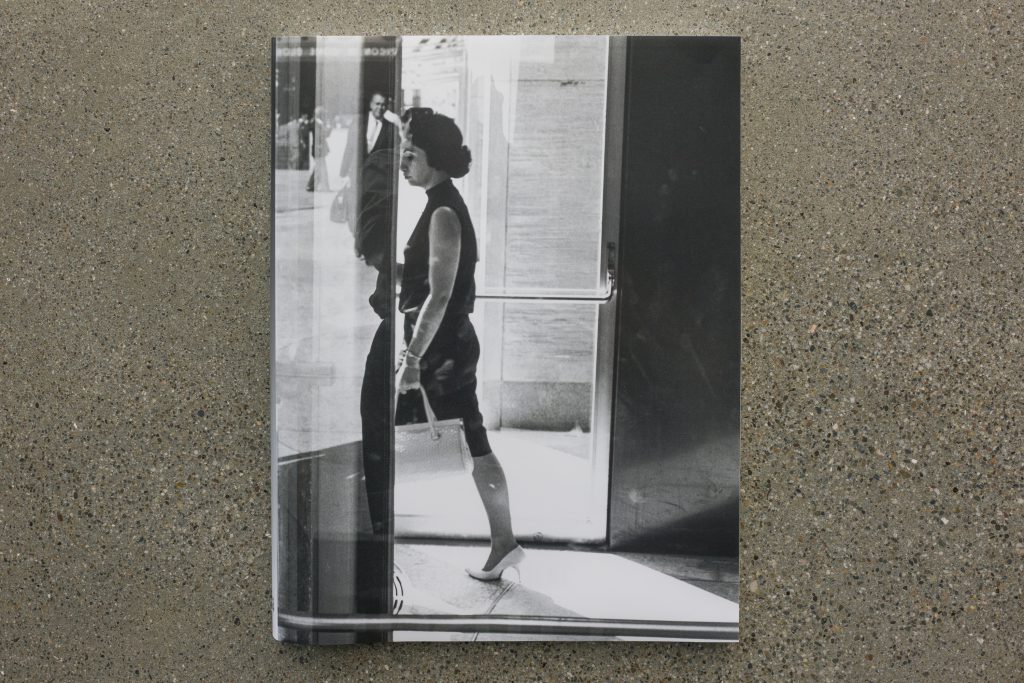Untitled
- Painting (Painting)
183 x 173 cm
Vivian Suter
Vivian Suter paints her canvases and then allows them to come in contact with natural elements. For thirty years she has lived in isolation in the Guatemalan jungle, accumulating canvases, sometimes leaving them out for long periods of time. As a result, Suter does not title or date her paintings. Typically, she leaves the unprimed canvas outdoors on stretchers to absorb the traces of fallen leaves, rain, water, dirt, passing animals, and the marks of her dogs, imprinting the daily life of the Guatemalan jungle onto the surface of each work. In the details of the work, the traces of both brush marks and what may be rivulets of water from rain are present. When the paintings are ‘finished’, she takes them off of the stretchers. Suter always presents her paintings unstretched, often hung from racks or from the ceiling, but also pinned to the wall, creating atmospheric environments that are layered, like the jungle, where one plant is seen through another. She draws her inspiration from the lush vegetation, vibrant flowers, birds, and the constantly changing weather of her tropical habitat. Her abstract paintings do not refer to specific flora, but evoke the living energy of the jungle with their swaths of color, gestural brushstrokes, and organic motifs. While this particular painting may seem to suggest a view through a window, Suter’s work rarely describes specific spaces, but rather tracks the performance of acts of nature. Each painting is a palimpsest, depicting the accretion of time.
Vivian Suter was born in Buenos Aires but brought up in Switzerland where she trained to be an artist. In 1981 she decided to withdraw from the art world and, starting out in Los Angeles, began a journey south which eventually ended in Guatemala, where she has lived ever since. She bought a property on an old coffee plantation on Lake Atitlán at the foot of a mountain facing two dormant volcanoes, which she shares with her mother, the artist Elisabeth Wild. The Wild family originally came from Vienna and emigrated to Argentina to escape fascism, and then from Argentina to Switzerland to escape from Juan Perón’s nationalization program. Thus, a refugee mentality is deeply rooted in Suter and her work. Her withdrawal from the art world and residence in the tropical landscape of Guatemala has led her to make work that both reflects the environment and represents it. Subjected to hurricanes in 2005 and 2010, when her studio was flooded and her works damaged, Suter had a damascene moment. She realized she had to work with nature, not against it. From then on she began to incorporate nature’s activities into her painting practice. She works on unstretched canvas and leaves it lying or hanging outside, allowing the accidents of natural events, whether the weather or the passing of animals, to shape them. At a time of intense interest in the environment, her work is expressive of the moment; a rejection of culture in favor of nature, and a foregrounding of the impact of nature on the environment.
Colors:
Related works sharing similar palette

© » KADIST
Leslie Shows
Human Quarry is a large work on paper by Leslie Shows made of a combination of acrylic paint and collage...

© » KADIST
Euan Macdonald
2010The video 9000 PIECES by Euan Macdonald was filmed at a musical instrument factory in Shanghai where 90 percent of the pianos that they manufacture are exported around the world, and only 10 percent are “finished” and can be labeled “Made in the US (or) Europe.” The video captures an intricate network of mechanisms as they interact with each other, their rhythmic movements resulting in an intense choreography and a cacophony of metallic sounds dramatized by Macdonald’s editing...

© » ARTNEWS
Prison Bakery at Pompeii Sheds Light on Slavery in the Ancient World – ARTnews.com Skip to main content By Francesca Aton Plus Icon Francesca Aton Associate Digital Editor, ARTnews and Art in America View All December 12, 2023 12:47pm Prison bakery identified at Pompeii Archaeological Park, Italy...

© » KADIST
Mark Bradford
2012This untitled work from 2012 is a print originally made as part of the Wattis Institute for Contemporary Art’s artist limited edition series...

© » KADIST
Olaf Breuning
2002In the work We only move wehen something changes !!!, Olaf Breuning composes a portrait of posed antiglobalization protesters, each wearing clown noses, inside of a scene reminiscent of an event...

© » FLASH ART
Mark Bradford "Nobody Knows the Trouble I've Seen" Hauser & Wirth / Monaco | | Flash Art Flash Art uses cookies strictly necessary for the proper functioning of the website, for its legitimate interest to enhance your online experience and to enable or facilitate communication by electronic means...

© » THEARTNEWSPER
The Metropolitan Museum will repatriate 16 Khmer sculptures to Cambodia and Thailand Art market Museums & heritage Exhibitions Books Podcasts Columns Technology Adventures with Van Gogh Search Search Antiquities trafficking news The Metropolitan Museum will repatriate 16 Khmer sculptures to Cambodia and Thailand The museum had been pressured and petitioned for years to return objects tied to smuggler Douglas Latchford Theo Belci 15 December 2023 Share Two antiquities with ties to the late dealer Douglas Latchford—the Bodhisattva Avalokiteshvara Seated in Royal Ease from the tenth or eleventh century (left) and the Head of Avalokiteshvara, the Bodhisattva of Infinite Compassion from the tenth century (right)—will be repatriated by the Metropolitan Museum of Art Metropolitan Museum of Art The Metropolitan Museum of Art has begun the repatriation process for 16 sculptures previously held in its permanent collection, returning 14 to Cambodia and two to Thailand...

© » ARTS EQUATOR
Yangon's well loved Palace of Literature (via The Myanmar Times) | ArtsEquator Thinking and Talking about Arts and Culture in Southeast Asia Articles October 3, 2018 The four storey yellow painted building with big masonry work of books in black and white pages for its motif loomed high at the corner of Merchant Road and 37th street...

© » KADIST
Katinka Bock
2008Like with other works of the artist, with First Piano Katinka Bock tried to go against the rules of use of clay, that is, by forcing the material to the extreme, and transferring the resulting elements into a cubic shaped volume...

© » ART & OBJECT
Famed Studio of Gaugin and Modigliani to Be Restored| Art & Object Skip to main content Subscribe to our free e-letter! Webform Your Email Address Role Art Collector/Enthusiast Artist Art World Professional Academic Country USA Afghanistan Albania Algeria American Samoa Andorra Angola Anguilla Antarctica Antigua & Barbuda Argentina Armenia Aruba Ascension Island Australia Austria Azerbaijan Bahamas Bahrain Bangladesh Barbados Belarus Belgium Belize Benin Bermuda Bhutan Bolivia Bosnia & Herzegovina Botswana Bouvet Island Brazil British Indian Ocean Territory British Virgin Islands Brunei Bulgaria Burkina Faso Burundi Cambodia Cameroon Canada Canary Islands Cape Verde Caribbean Netherlands Cayman Islands Central African Republic Ceuta & Melilla Chad Chile China Christmas Island Clipperton Island Cocos (Keeling) Islands Colombia Comoros Congo - Brazzaville Congo - Kinshasa Cook Islands Costa Rica Croatia Cuba Curaçao Cyprus Czechia Côte d’Ivoire Denmark Diego Garcia Djibouti Dominica Dominican Republic Ecuador Egypt El Salvador Equatorial Guinea Eritrea Estonia Eswatini Ethiopia Falkland Islands Faroe Islands Fiji Finland France French Guiana French Polynesia French Southern Territories Gabon Gambia Georgia Germany Ghana Gibraltar Greece Greenland Grenada Guadeloupe Guam Guatemala Guernsey Guinea Guinea-Bissau Guyana Haiti Heard & McDonald Islands Honduras Hong Kong SAR China Hungary Iceland India Indonesia Iran Iraq Ireland Isle of Man Israel Italy Jamaica Japan Jersey Jordan Kazakhstan Kenya Kiribati Kosovo Kuwait Kyrgyzstan Laos Latvia Lebanon Lesotho Liberia Libya Liechtenstein Lithuania Luxembourg Macao SAR China Madagascar Malawi Malaysia Maldives Mali Malta Marshall Islands Martinique Mauritania Mauritius Mayotte Mexico Micronesia Moldova Monaco Mongolia Montenegro Montserrat Morocco Mozambique Myanmar (Burma) Namibia Nauru Nepal Netherlands Netherlands Antilles New Caledonia New Zealand Nicaragua Niger Nigeria Niue Norfolk Island Northern Mariana Islands North Korea North Macedonia Norway Oman Outlying Oceania Pakistan Palau Palestinian Territories Panama Papua New Guinea Paraguay Peru Philippines Pitcairn Islands Poland Portugal Puerto Rico Qatar Romania Russia Rwanda Réunion Samoa San Marino Saudi Arabia Senegal Serbia Seychelles Sierra Leone Singapore Sint Maarten Slovakia Slovenia Solomon Islands Somalia South Africa South Georgia & South Sandwich Islands South Korea South Sudan Spain Sri Lanka St...

© » THEARTNEWSPER
German Academy of Arts opens Otto Dix archive—and recalls a scandal Art market Museums & heritage Exhibitions Books Podcasts Columns Technology Adventures with Van Gogh Search Search Otto Dix news German Academy of Arts opens Otto Dix archive—and recalls a scandal Dix’s war painting The Trench, lost during the Second World War, is in focus at the opening Catherine Hickley 7 February 2024 Share Otto Dix's Der Schützengraben (The Trench) (1923) provoked a strong reaction when it was first displayed 100 years ago Photo: Hugo Erfurth, Akademie der Künste Berlin, Otto-Dix-Archiv A century after Otto Dix’s First World War painting The Trench (1923) provoked an outcry when it was displayed at the Prussian Academy of Arts in Berlin, the institution's successor, the Germany Academy of Arts , is opening to the public the inventory of the artist's works that he compiled—somewhat grudgingly...

© » ARTFORUM
Virginia Museum of Fine Arts Returns 44 Artifacts to Egypt, Italy, and Turkey – Artforum Read Next: LOUVRE RAISES TICKET PRICES BY NEARLY 30 PERCENT Subscribe Search Icon Search Icon Search for: Search Icon Search for: Follow Us facebook twitter instagram youtube Alerts & Newsletters Email address to subscribe to newsletter...








